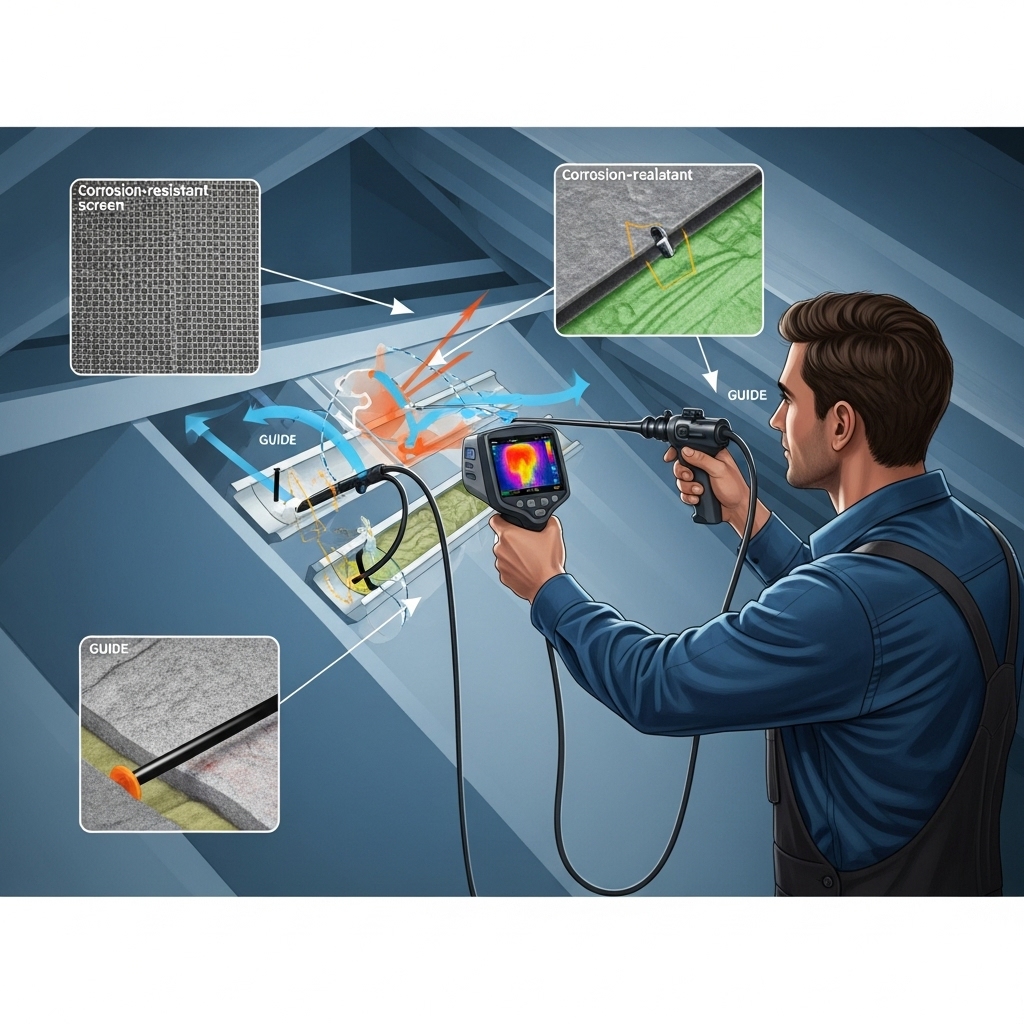Los Angeles homeowners and property managers have always had to be resourceful. Our buildings span a century of styles, our climate swings from marine layers to heat waves, and our neighborhoods blend dense urban corridors with open hillsides. In this mix, rodent pressure ebbs and flows with seasons and city activity, demanding solutions that are both durable and unobtrusive. In recent years, the most effective trend has been a shift away from one-off fixes and toward holistic rodent proofing that treats the building like a living system. The new playbook blends building science, smart monitoring, and low-visibility materials that stand up to weather and time while preserving a home’s or business’s architectural character.
It starts with better diagnostics. Instead of relying on surface clues alone, pros are spending more time in the places owners rarely see, mapping airflow, temperature differentials, and the pattern of dust and oils that signal travel routes. This discipline pays off, because the best reinforcement is precise—closing the right half-inch seam behind a conduit cover beats sealing six random gaps. The result is cleaner work, fewer surprises, and outcomes that hold season after season.
Smarter inspections and discreet monitoring
Modern proofing introduces simple, discreet monitoring where it adds value. Think of it as breadcrumbs for professionals: tamper-resistant indicators tucked along likely routes that help verify whether a pathway is still active after sealing. These do not turn your home into a lab, nor do they create visual clutter. They simply provide feedback so a crew can confirm that exclusion is doing its job.
Meanwhile, inspection tools have improved. Lighting, optics, and flexible scopes make it easier to see deep into soffits and behind knee walls without tearing anything apart. Thermal and moisture readings reveal where conditioned air is leaking—often the same places pests exploit. Because these techniques are non-destructive, the process respects your space and keeps the focus on targeted fixes rather than broad demolition.
Higher-performing materials that blend in
Another trend is the use of materials designed for both longevity and appearance. In coastal neighborhoods, corrosion-resistant screening and fasteners prevent early failure. Around tile roofs and stucco, custom-formed covers and trims match the texture and color of existing surfaces. In mid-century or contemporary homes with clean lines, low-profile solutions preserve the minimalist look while shutting down access points. All of this recognizes that proofing should feel like part of the original build, not an afterthought.
In crawl spaces and attics, upgrades often include cleaning and restoring the thermal envelope. Fresh insulation—kept clean by successful exclusion—improves comfort, while careful air sealing along top plates and chases eliminates the warm drafts that invite pests. The combination of cleanliness and temperature stability becomes its own deterrent.
Integrated sanitation and habitat management
Proofing no longer stops at the wall. Crews are coordinating with homeowners on storage habits, exterior vegetation, and waste staging. The goal is to reduce attractants without turning a home into a fortress. Recycling bins are positioned a few inches from walls. Ivy is trimmed back away from rooflines. Firewood and seasonal storage are lifted off the floor so inspection remains easy. These are modest adjustments that support the physical work and make it last.
In the middle of a project plan, more owners ask how modern rodent proofing differs from the old routine of traps and patching. The answer lies in integration and transparency. Crews document entry points, explain why each location matters, and show how materials bridge small movements in the structure over time. The homeowner is not just a bystander; they become a partner who understands where to keep an eye and when to call for a checkup.
Sustainability and low-impact approaches
Los Angeles has a strong culture of environmental care, and that shows up in proofing. The emphasis on exclusion over chemicals aligns with eco-conscious living. When traps are necessary, they are positioned thoughtfully and monitored responsibly. Waste from cleanouts is bagged carefully and disposed of properly, and materials are chosen for durability to reduce the need for premature replacement. In homes with solar, EV chargers, or other green upgrades, attention to penetrations ensures those additions remain secure without creating new vulnerabilities.
Another sustainable angle is energy performance. By tightening the envelope during proofing, owners often notice steadier temperatures and quieter HVAC operation. That translates into comfort and lower energy use, which fits neatly with the broader push toward efficient, resilient homes that can ride out heat waves and chilly desert nights alike.
Neighborhood collaboration and shared walls
In multi-unit buildings and dense neighborhoods, the newest trend is better communication among neighbors and managers. Pests do not respect property lines, so a coordinated plan for shared walls, courtyards, and service corridors works better than a patchwork of isolated efforts. Simple steps like synchronized waste pickup, consistent door-sweep maintenance, and cooperation on vegetation trimming can transform a block. Property managers who embrace this approach see fewer re-infestations and happier residents.
Even in single-family areas, neighbors often benefit from comparing notes after a season of unusual weather. Did a wind event knock soffit screens loose? Did construction up the street displace populations? A short conversation can surface patterns that an inspector can then verify and address at specific points around your home.
Focus on aesthetics and homeowner experience
Proofing used to be something you tried to ignore. Now, well-executed work is something homeowners appreciate and even show off. Clean, flush-mounted covers, color-matched trims, and tidy attic spaces communicate care. You feel it day to day in the way doors close with a soft seal, the way closets smell like cedar and laundry, not like dust, and the way night sounds give way to actual quiet. That experience is the end goal.
Frequently asked questions
Are the new materials really more durable?
Yes. Components selected for LA’s climate—heat, salt air, and wind—hold up longer, especially when they are installed precisely. Durability comes from materials and method: well-fitted covers, correct fasteners, and seals that flex with the building.
Do smarter inspections take longer?
They are often more efficient because they focus on the right places. The time invested up front prevents repeated visits and lingering issues, saving effort over the life of the home.
Will proofing change the look of my home?
Quality work blends with your architecture. On most homes, you will not notice the changes unless someone points them out. Where visibility is unavoidable, finishes are chosen to complement existing surfaces.
Is this approach chemical-free?
The emphasis is on exclusion and sanitation. When traps or targeted treatments are used, they are deployed carefully and in accordance with best practices to protect people, pets, and the environment.
How often should I schedule follow-ups?
At least annually, and after extreme weather, roofing work, or renovations that create new penetrations. Quick checkups keep small issues from turning into invitations.
If you want a home that is quieter, cleaner, and built to resist intrusion season after season, consider professional rodent proofing guided by the latest methods. The right plan respects your architecture, improves comfort, and gives you the lasting peace of mind that comes from a truly sealed and healthy space.

